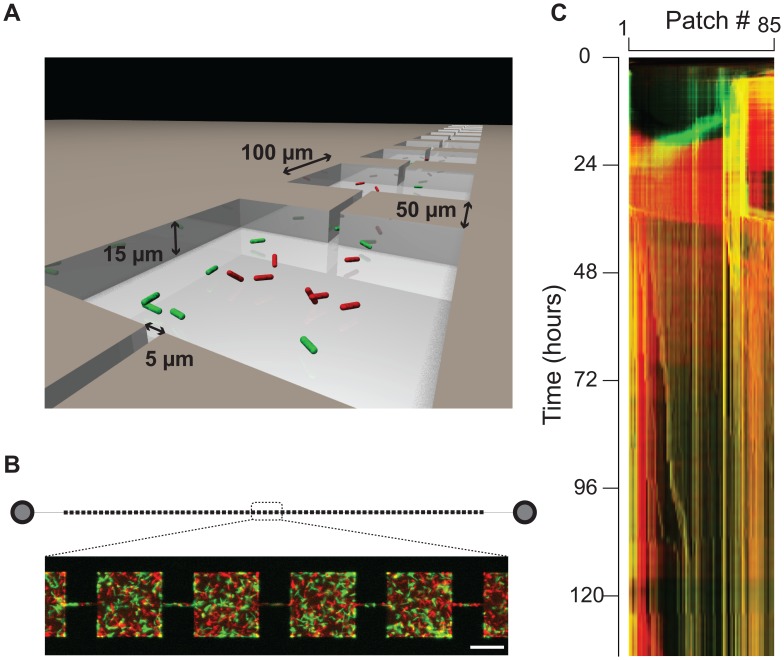Cooperation, Colonization, and Competition in Micro-Scale Ecosystems
In nature organisms fight for survival. When resources are limited, this fight may get tough. While competing for resources, the structure (both physical and chemical) of a bacterial habitat plays a crucial role. We use microfabrication to create on-chip ecosystems that mimic aspects of the intricate spatial structure of natural bacterial habitats. Using fluorescence microscopy we characterize the interaction between multiple competing bacterial strains inhabiting heterogeneous, yet well-defined, landscapes. Our experiments are aimed at understanding how physical, chemical, and ecological processes shape bacterial communities and their biodiversity.
In particular, we have characterized how nutrient-responsive regulation determines chemical warfare in a three-strain E. colicommunity. We furthermore investigate competition between wild-type and GASP E. coli strains. By interpreting WT-GASP competition in a game theoretic framework we provide insight into the role that spatial structure plays in stabilizing coexistence of the two strains.
In a related line of research we focus on bacterial population dynamics in antibiotic gradients. Using a microfluidic platform, we create antibiotic landscapes and visualize how populations of nonresistant E. coli navigate such lethal labyrinths.
Further reading:
- F.J.H. Hol,_ P. Galajda, K. Nagy, R.G. Woolthuis, C. Dekker, J.E. Keymer Spatial structure facilitates cooperation in a social dilemma: empirical evidence from a bacterial community Plos One, 8: e77042.
- FJH Hol, MJ Voges, C Dekker, JE Keymer Nutrient-responsive regulation determines biodiversity in a colicin-mediated bacterial community BMC Biology, 12:70 (2014)

Image: Cooperation and competition of wild-type and GASP communities in microhabitat.